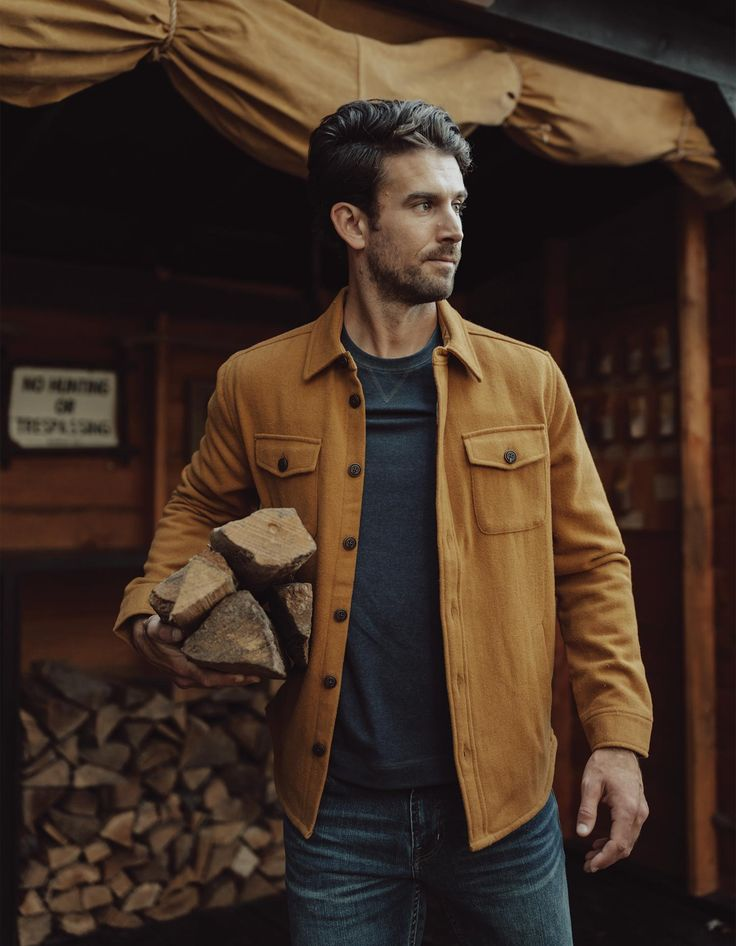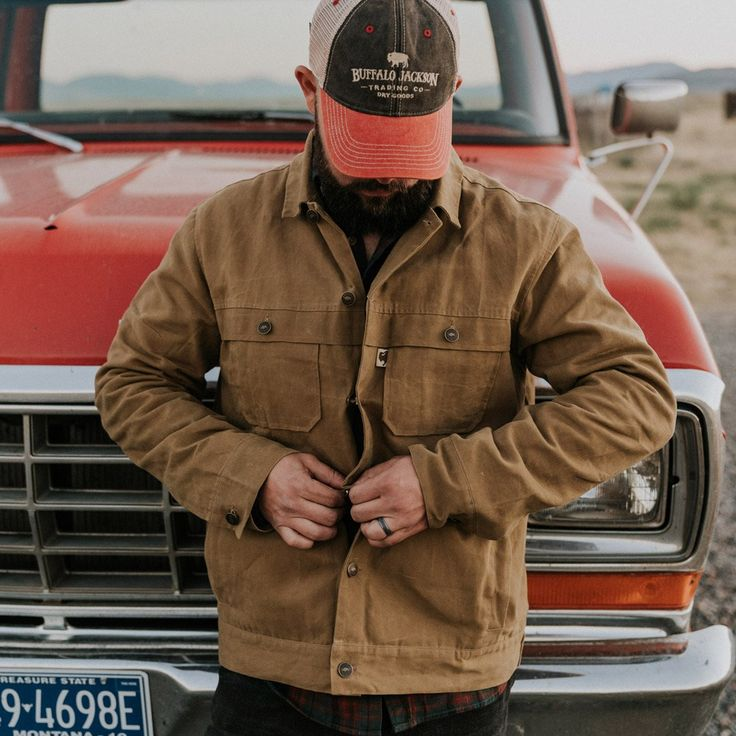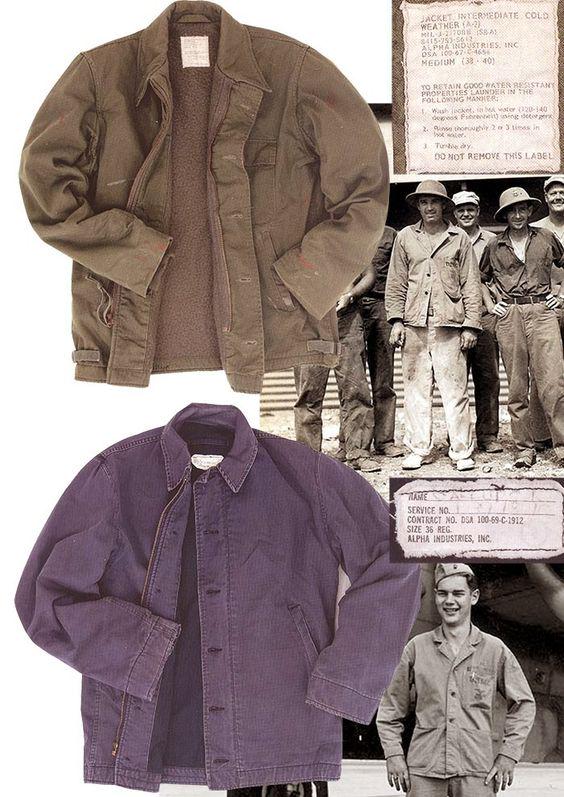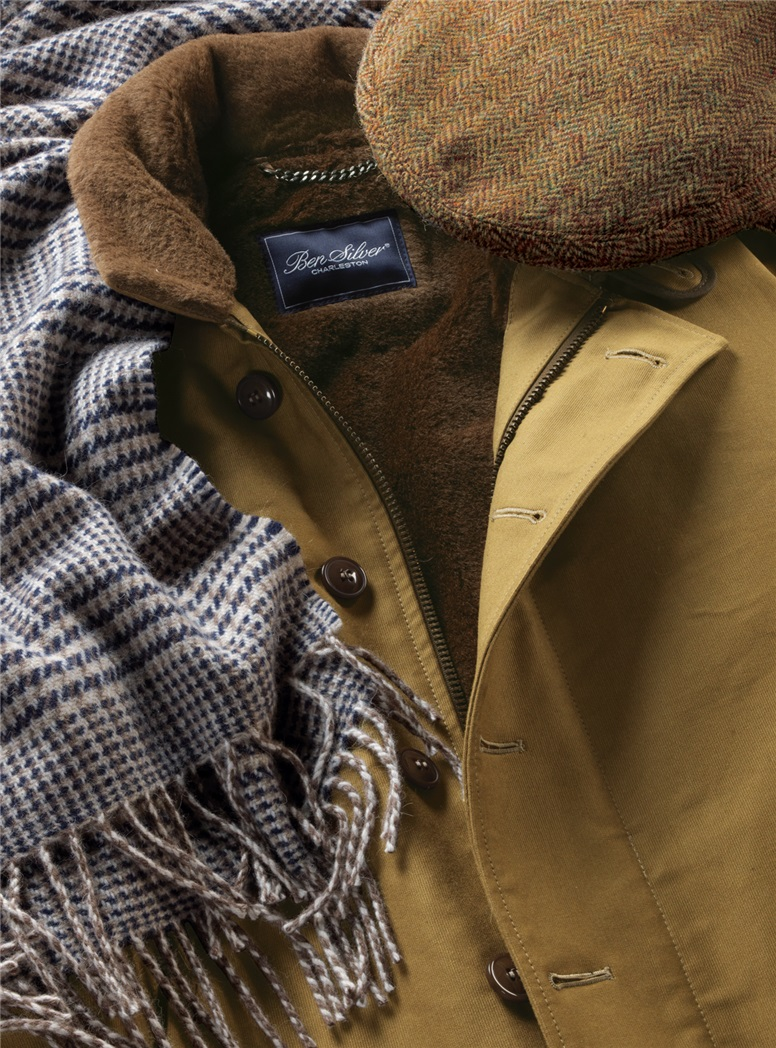The 1944 N1 deck jacket is a milestone in military history. It was originally developed for the U.S. Navy during World War II and remains popular today as a fashion statement. MAO-san is a professional fashion blogger from Japan. He combines jackets with American casual for warmth and style on chilly days. We summed up his dressing experience. Let me introduce the reasons for choosing the N1 deck jacket, and give matching suggestions based on Maosang’s dressing experience.
Origin And History Of The N1 Deck Jacket
The us navy jacket N1 Deck Jacket was a garment adopted by the US Navy during World War II, developed in response to the demands of service in colder seas. The designation “N1” signifies that it was the first jacket approved by the Navy for use on deck.
The design of the N1 Deck Jacket was inspired by the clothing of Soviet troops serving on the arctic routes at the time, as it was designed to provide both warmth and durability. The first N1 deck top was designed in 1943 by American layout house Kersey Co.
Made from two layers of cotton canvas and fleece, this jacket keeps the cold out and keeps you warm. The neckline is also made of storm fabric, which can effectively resist the wind and rain. N1 boat suits are favored for their complete functions and novel shapes. Today, the N1 deck jacket has become a classic outdoor wear and is even popular in today’s market. Its design has also influenced today’s fashion styles and clothing collocations.
Next, we will introduce the deck jacket from the design features and its role in the fashion industry, and give matching suggestions based on Maosang’s dressing experience.

Version Changes And Features Of The N1 Deck Jacket
- The first version: the N1 deck jacket was originally a paramilitary uniform for soldiers during World War II. The first version was the U.S. Navy blue jacket. With a blue wicked cotton base and felt lining, this vintage army jacket is suitable for cold, wet coastal areas. In addition, it is equipped with metal zippers and pockets for the convenience of soldiers and soldiers. is a vintage military jacket.
- Redesigned: Since 1951, the N1 deck jacket has been redesigned with golden wool lined with updated surface materials. Moreover, this generation of N1 armor has more pockets and can be used in work and life.
- Aluminum embossed flower version: In 1960, in order to make the product more fashionable, manufacturers added aluminum embossed embossed flowers to leather hands, bracelets and other parts to create a strong contrast effect, giving people a sense of harmony with the past. Different feelings.
- Using High-Quality Canvas Version: Due to the upgrade of the panels, the N1 deck jacket also uses high-quality canvas panels, and has more fashion sense and texture.
The N1 deck jacket has gone through several iterations, each with its own style. Although the N1 deck jacket is different in shape and details, the basic design is guaranteed in terms of durability and practicality, and it is still loved by people. The jacket is paired with leather Chinese shoes or boots for a more refined look and to inject new ideas into the autumn and winter silhouettes.

Design Of The N1 Deck Jacket
- Material: N1 plywood jacket is made of thick cotton or canvas, which has strong durability and can withstand the test of various environmental and climatic conditions.
- Color: Most N1 deck jackets are mainly in dark tones. The heavy canvas body is light brown or light gray. After printing and dyeing, it often becomes dark smoked, creating a military and fashionable atmosphere. Retro military jacket Most typical.
- Accessories: N1 deck jackets generally use typical metal zippers, copper buckles, cloth buckles, etc., and have design elements such as slings and pockets.
- Detailed processing: N1 deck jacket adopts large pockets, invisible tiger buckles and other processing methods. The large and small pockets are mainly used to place existing tools, wallets and other necessities, effectively solving various problems in outdoor life.
- Fit: The design of the N1 deck jacket is relatively simple. The shoulders are deliberately loose so that the jacket does not restrict movement. The cuffs also have elastic cuff drawstrings to ensure that they are not too loose and keep external water from flowing out and rainwater from entering.
The design of the N1 Deck Jacket is similar, with bold fabrics and color combinations making it a stylish yet highly functional classic. In autumn and winter, compared with coats and thick coats, coats are handsome and stylish, very neat and capable. Whether they are paired with trousers or skirts, they are very good choices!

N1 Deck Jacket Popular In Hollywood
In World War II, the N1 deck jacket became popular for its use in the regiments. Because of its durability, warmth and practicality, it is loved by soldiers. Today, in some military collection exhibitions, the N1 armor jacket is still an exhibit with collection and value preservation.
The N1 deck jacket also played a big role in the Hollywood Fort film. For example, the jacket worn by Steve McQueen in the movie “The Great Escape” made it a very popular fashion item. Since then, the number N1 deck jacket has appeared in several Hollywood films, such as “Top Gunner”, “Ling Yun”, “Indiana Jones: Search”, “Raiders of Treasure” and so on. Under the huge influence of Hollywood films, the N1 deck jacket has become a very popular pop culture.
The N1 deck jacket has gained popularity due to its durability, utility and style. Its military background and appearances in films have unique cultural value, making it a revered fashion icon. Winona Ryder’s outfits have been popular for nearly 30 years. At the Hollywood premiere of “The Commitments” in August 1991, she wore an antique leather jacket, washed old white T-shirt and washed live jeans. No SEI can match this pair of golden combinations better. It has a complete retro street flavor and will carry out the personality to the end.

Why The N1 Deck Jacket Is Still Popular Today
The N1 Deck Jacket has a clean design with a focus on utility and durability. Here are the factors that make the N1 Deck Jacket still popular right now:
- Durability: The N1 deck jacket uses high-quality materials and production technology, which is durable and of high quality, and can stand the test of time.
- Practical: The N1 Deck Jacket is windproof, waterproof and insulating for cold and wet conditions.
- Simple design: The design of the N1 deck jacket is simple and simple, and it will not change with the trend. This simple style will never be outdated, which is one of the reasons why the N1 deck jacket has always been popular.
- Historical influence: Influenced by the U.S. Navy from World War II, the N1 deck jacket is an important part of American civilization and the civilization of the world.Wearing N1 is not just wearing a military jacket, but carrying a culture.
A wide range of clothing choices: various styles and patterns can meet the style needs of various groups of people, and at the same time adapt to various harsh environments and are suitable for many occasions.

Conclusion:
Since its inception, the N1 deck jacket has been constantly updated to meet the needs of the new era. It can be used as a daily necessity or as a collection, and its many advantages make it popular. The N1 deck jacket is an essential part of American civilization. For the N1 deck jacket, this is not just a piece of military uniform, it carries a culture and is of great significance to the United States.
FAQs:
What is a deck jacket
The term deck jacket refers to heavy winter coats worn by sailors during the mid-20th century. They are highly valued by vintage collectors and workwear enthusiasts, not only because of their history, but also because of their durability and protective warmth.
What is the history of the N1 jacket?
Developed in 1944, the N1 system is comprised of the now famous deck jacket, a bib and brace overall and a soft ‘helmet’ with a peaked front. All pieces could be worn independently of one another, or paired with other uniform items as necessary.
When was the n1 created?
Known at the time as the Concrete Highway, the freeway was initially opened in 1975 as a route to avoid the city centre of Johannesburg and to provide access to the western areas of Witwatersrand.